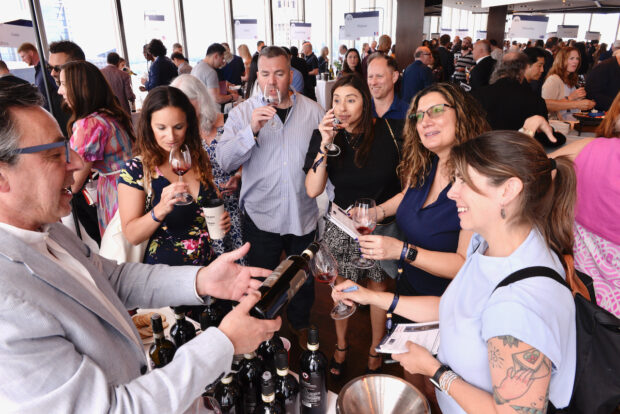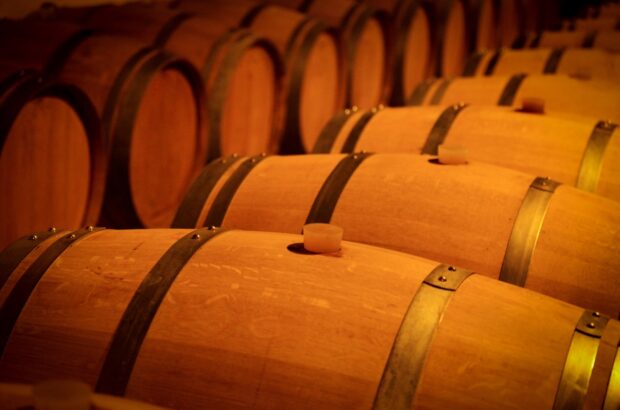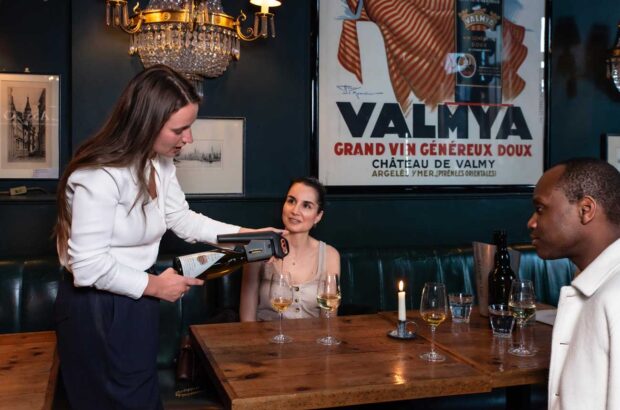Many have dismissed natural wine as a fad; a movement followed only by bearded kale-eating hipsters, and one which will peter out as soon as the next cool thing comes along.
Isabelle Legeron MW
But, like beards and kale, the concept of natural wines seems here to stay, judging by the queues snaking around the corner of the Old Truman Brewery in London’s Brick Lane last Sunday for the first of the two-day RAW wine fair.
The brainchild of French Master of Wine Isabelle Legeron MW, author of the book Natural Wine and a Decanter contributor, RAW showcases wines that are as unprocessed and additive-free as possible.
There is, of course, no official definition of what constitutes a natural wine. Many winemakers dislike the term because they feel it suggests the vast majority of other wines are somehow unnatural.
The ‘charter of quality’ to which producers at RAW must adhere states that wines must be certified organic or biodynamic, use natural yeasts and have no additives except for low levels of sulphites (a maximum of 70mg/l – well below EU maximum levels of 160mg/l to 400mg/l depending on the wine style), or have been subjected to winemaking ‘gadgetry’.
Some 195 stands, showcasing wines from Argentina to Switzerland and everywhere in between, were joined by a few artisan cider, coffee, tea, beer, cheese and food producers, making the grower attendance the biggest in the annual fair’s four-year history.
The 1,000-strong crowds who flocked to Sunday’s consumer day clearly were excited enough by natural wine not to be turned off by the £40 ticket price (£30 in advance) and £5 catalogue (included in the price for consumers), or the uncomfortable heat of the greenhouse-like space to try – and buy – their way through the hundreds of wines on show. A number of wine merchants and press were also there who did not pay for tickets, but chose attend ahead of the trade day on Monday.
Natural wines, arguably more than ‘regular’ wines, divide opinion, and there were a fair number of acetic, mousey, cidery, bretty, short wines on show that, like ugly babies, only a mother could love.
But the were also some real stars, from both new and established producers. In the latter category were New World estates such as Seresin, Cullen, Shobbrook, Testalonga, Intellego and Clos Ouvert, and Old World stalwarts including La Biancara, Foradori, Radikon, Le Coste, Cascina Tavijn, Riecine, Frank Cornelissen, Château La Coste, Domaine Milan, Marcel Lapierre, Domaine Guillot-Broux, Larmandier-Bernier, Fleury, Franck Pascal, Domaine de L’Ecu, Domaine St-Nicolas, Domaine Le Fay d’Homme, Domaine d’Aupilhac, Le Soula, Matassa, Gauby, Eric Texier, Tscheppe, Gut Oggau and Klabjan.
Among the new producers – or new to the UK – that impressed were Coturri and Ambyth in California, Vinos Ambiz in Spain, Il Borghetto and Alberto Oggero in Tuscany, Château de Bois-Brinçon in the Loire, Domaine de L’Horizon in Roussillon and Domaine Rouge Bleu in Rhône.
And of course there was the unveiling of Terre Gneiss 2014, the first wine from the Vine Revival joint venture between top Muscadet producer Vincent Caillé (Le Fay D’Homme) and Decanter’s tastings coordinator Christelle Guibert.
See also:
Written by Tina Gellie







